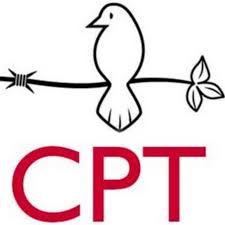What Peace Looks Like Here
Weze village located near the Iranian border in Iraqi Kurdistan. Photo by: Peggy Gish.
By Peggy Gish
Flowers graced the front of the house, next to a large, well-tended field of vegetables.
“Is this the village of Weza?” I asked my teammate, not believing what I was seeing. This did not look like the same village our team visited in June 2010. Weza, nestled in the mountains of northeastern Iraqi Kurdistan and close to the Iranian border, looked bigger. Fields were larger and greener and the houses in better repair. Residents, we spoke to, said that even though they know in the back of their mind that danger could return to their village, they feel more relaxed. Tourists are once again coming into the area for vacations, to enjoy the beautiful views and the milder summer temperatures.
Six years ago, in June, 2010, we sat in this same village, with the uncle of 14-year-old Basoz, as he told us about his niece’s tragic death three weeks earlier. A rocket had exploded near Basoz while she was preparing tea for the rest of the family who were working in their fields. Her 20-year-old cousin, with her at the time, was not physically injured, but was severely traumatized. The uncle, describing the situation there, told us, “Over the last ten days, more than 200 rockets have exploded around our village. People here are terrified, and many have left.”
Today, we had returned to the Sedakan and Choman districts, visiting civilian areas to learn what the affects of more recent cross-border attacks from either Turkey or Iran has been along the northeastern border between Iraq and Iran. In the past two days we had met farmers who had family members injured, livestock killed, crops or orchards damaged, or who fled their land out of fear. When we found ourselves not far from Weza and Kani Spi, two villages we had spent time in years ago when they were experiencing attacks, we decided to also visit there.
The residents of Kani Spi and CPTers in Kani Spi, Iraqi Kurdistan. Photo by: Julie Brown.
Residents of Kani Spi had become friends of the team during visits over the years to monitor the shelling from Iran in the area around their village during the yearly growing seasons. In June 2011, two from our team lived with them for two weeks, in tents, in order to accompany them during their planting season and to be witnesses if there were near-by shelling from Iran. During the days we helped with planting or other work around the village. While there was no shelling near the village during that time, we did hear occasional explosions in the distance, closer to the border. At dusk, we walked past women milking their family cow, teenagers bringing the sheep and goats into rock-piled corrals for the night. Sometimes, the children gathered and we found ourselves in a circle, volleying a ball back and forth. We saw a vulnerable, but strong people with determination to stay in their village and continue their traditional life.
We’ve learned that a contributing factor to the resumption of bombing by Turkey in other border areas in the past year, has been the success of Kurdish forces against ISIS, which then increased a Kurdish presence in areas of Iraq and Syria. With Iran, one of the factors of the ebb and flow of their cross-border attacks on Kurdish Iraqi villages has been the movement of members of an Iranian Kurdish independence party in these areas and the degree to which Iran sees them as a threat.
Changes we could see now in Kani Spi included the building of a new house and the expansion and flourishing of their fields and orchards. As in Weza, however, the most important change was one we couldn’t photograph. It had to do with the cessation of the shelling and the absence of daily fear of attack. It was something we could feel as well as see—the relaxed brows, lighter conversations, the ability to plan ahead for the future, and the quicker laughter that seemed to ripple through the mountain passes above and around the village.
“You see the difference in our life now?” a long-time friend from Kani Spi, asked us. “Before, you saw what fear of violence looks like for a village. Now what you see—this is what peace looks and feels like here!”
We left with the longing that the deeper justice and power issues contributing to the strife between rebel fighters and the neighboring governments be faced and resolved non-militarily, so that the graceful farming families living in the border villages, now experiencing attacks, could also soon know and flourish under the daily realities of peace.

